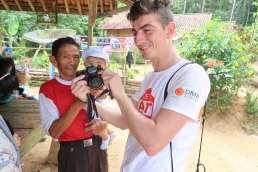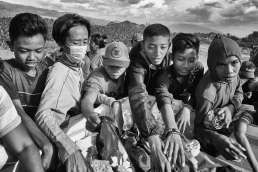Working in SE Asia as a documentary photographer
Language, heat, moisture and more moisture.
Can I take your photo?
Across Indonesia, over 300 different languages are spoken. As a photographer, you will almost certainly need a translator who can speak the language of the ethnic group that you will be working with. But finding someone with professional translation experience outside of a big city can be difficult.
Translator or not, a critical sentence to learn in the local language is “Can I take your photo?” as this helps to build a relationship and can help to spark a conversation. Just make sure not to say the sentence too well, as people sometimes assume you are fluent, which can be quite embarrassing when it turns out you most certainly aren’t!
You may pick up the local language quite quickly, but then find yourself on another assignment in a different area, with an entirely different dialect. This has been the case with all the cities and villages that I have worked in or visited across South East Asia. The key is to remain adaptable — try to pick up a few key phrases wherever you are and build up your base of translation contacts.
Culture vulture
Having spent the majority of the last four years in South East Asia, I have developed a good understanding of the culture and the way things work. For instance, it is critical to understand prayer times in Muslim countries. You need to be aware that the people you are working with might need to stop what they are doing to pray, and to be able to time interviews and travel around this.
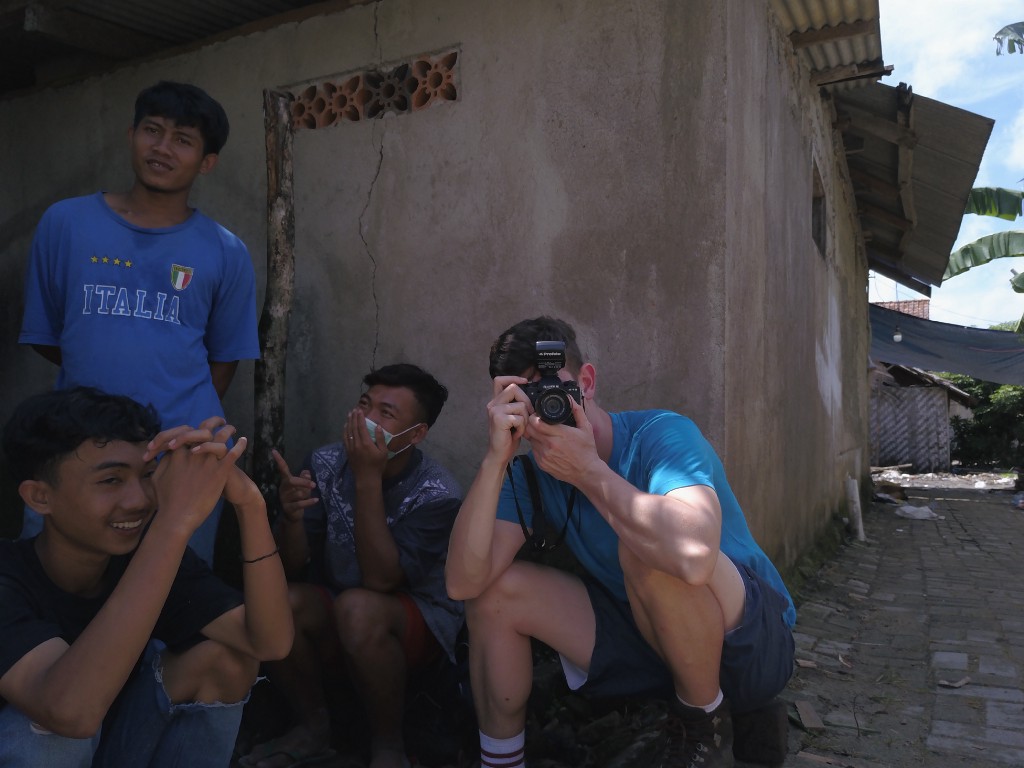
One of the things I have found helpful is my love of food! Having a passion for food somehow gives me a good understanding of local culture when I first arrive somewhere. All you need to do is visit a local market or a local street food hotspot when you first arrive — this can give you a good understanding of how the place works, which can come in very handy in the long run when you are out and about taking photos.
Heat and humidity
As expected, South East Asia is, in general, very hot. Shooting will make you tired and achy, and in between shoots you will most likely be travelling, most of the time on dangerous and uncomfortable roads. So it goes without saying that keeping hydrated and out of the sun is essential.
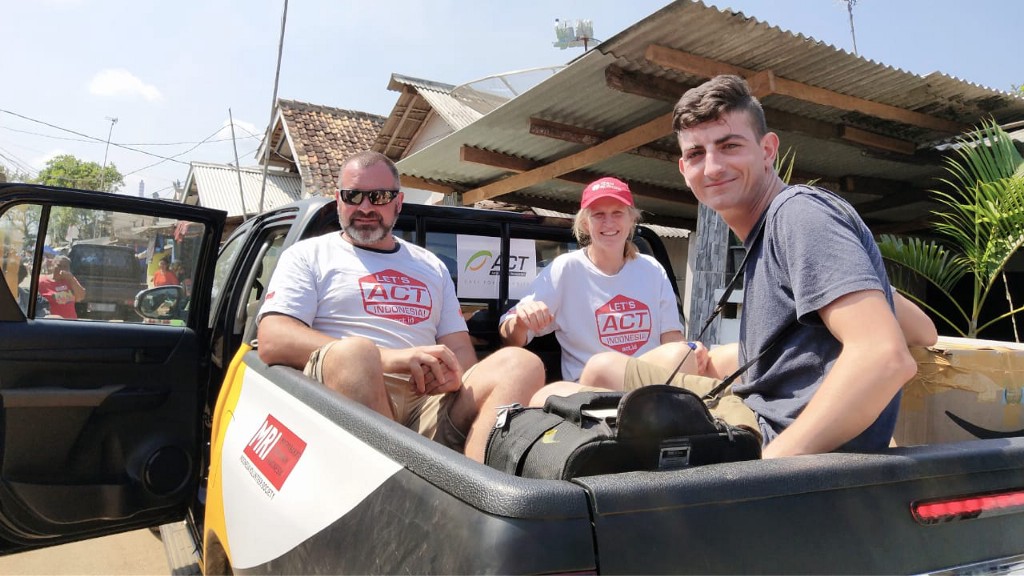
But those new to this type of environment might not realise the problems of extremely high humidity, which can be incredibly dangerous for cameras and laptops, and before you know it, that expensive laptop starts failing, the metal starts to corrode, and the whole thing eventually dies. It is always essential to have spares, backups and workarounds in case of emergencies. Use silica gel and waterproof cases to keep your equipment as dry as possible (and bring plenty of the former — it’s not often you come across an obliging oven in which to dry out your silica packages!).
Of course, it’s all very well telling you to pack two of everything, but bear in mind that an assignment begins before you start pointing your camera at things — it starts in your suitcase. Plan ahead, travel as light as possible and make sure that everything you have is functional and necessary. As if worst comes to worst — know if and where you can get a quick replacement to mitigate against any equipment failure.
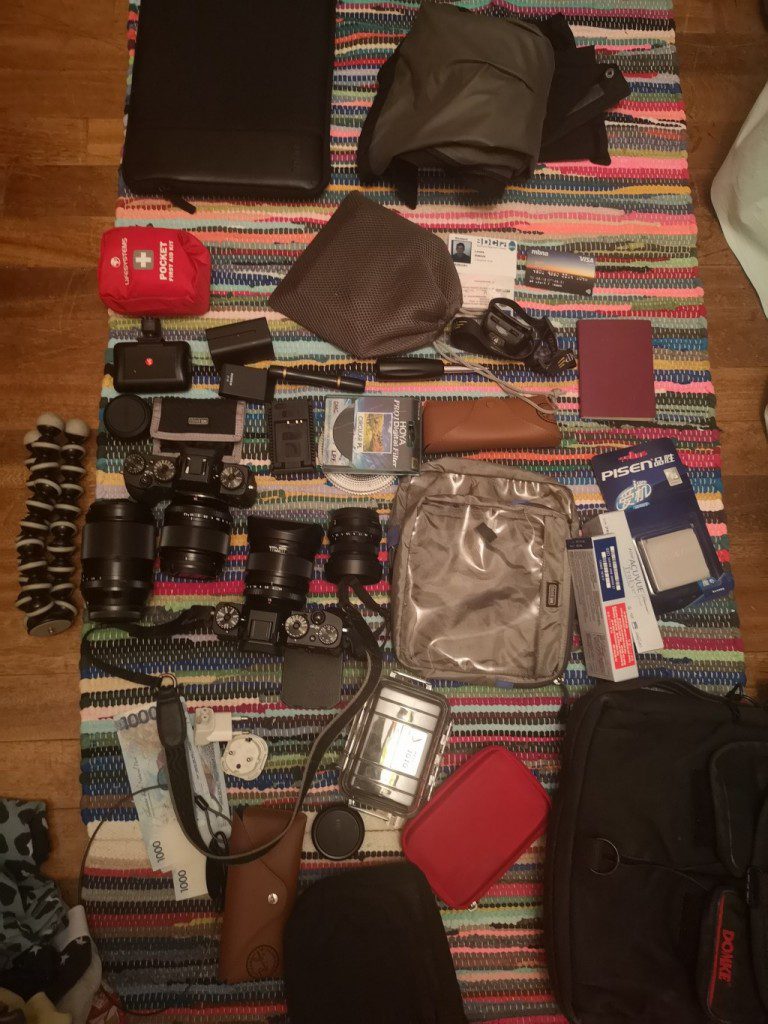
Yes, South East Asia can be a daunting place to work in sometimes, but there’s a reason I keep coming back, both as a photographer and in a personal capacity. It’s an extraordinary area with so much life, culture (and food) to see that I can’t imagine I’ll ever feel ‘done’.
Lewis Inman is an award-winning documentary photographer and filmmaker born in London and now based in the Philippines, covering social issues and commercial commissions worldwide. Lewis received a 1st class honours in Photojournalism & Documentary Photography from University of the Arts London (LCC). Lewis has won many awards including first place prize of the Symons-Hatton Award, recognising his “commitment and dedication to Lens Based Media”. He has been working in South-East Asia with a range of clients including Team Rubicon UK and the DEC on behalf of Arete.
December 16, 2019
Documenting natural disasters | Indonesian Tsunami 2018
On 28 September 2018, Palu was hit by a 5-metre-high tsunami shortly after a magnitude 7.5 earthquake struck and area 80 km north of the city. The combined effects of the earthquake and tsunami led to the deaths of at least 2,100 people and many more missing. The earthquake caused major soil liquefaction, which meant many buildings were swallowed up by the ground.

My initial plans were to visit Indonesia for a month or so, but this would have been after Christmas. However immediately upon hearing about the sheer scale of this disaster, I wanted to get out there and try to help; to show the disaster and give people a voice, while finding out what they needed.
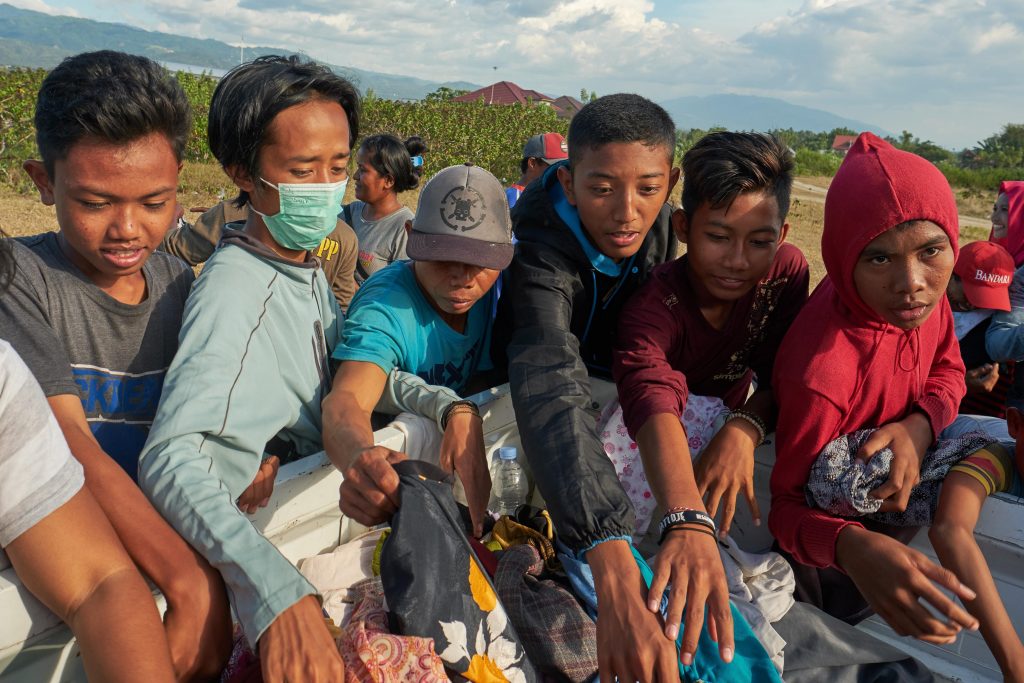
The first part of the journey took me from London to Jakarta. There is normally a direct flight to Palu, but due to damage to the airport, planes are currently unable to land. From Jakarta, I had to take a smaller plane with propellers via Makkasar (a port city on the eastern side of Sulawesi Island) to Palu. The flight was full of local NGO workers bringing as many supplies as they were allowed.
As we approached the airport, the city was eerily dark because of the lack of electricity. The airport, however, was filled with army personnel, equipment, planes and helicopters. I could see a temporary control tower in place. Once out of the airport, we were plunged into the darkness I had seen from the plane — the streets deserted, and all shops closed. After settling into one of the hotels that had not suffered severe damage, I headed out in the morning on foot to see the damage from the tsunami for the first time..
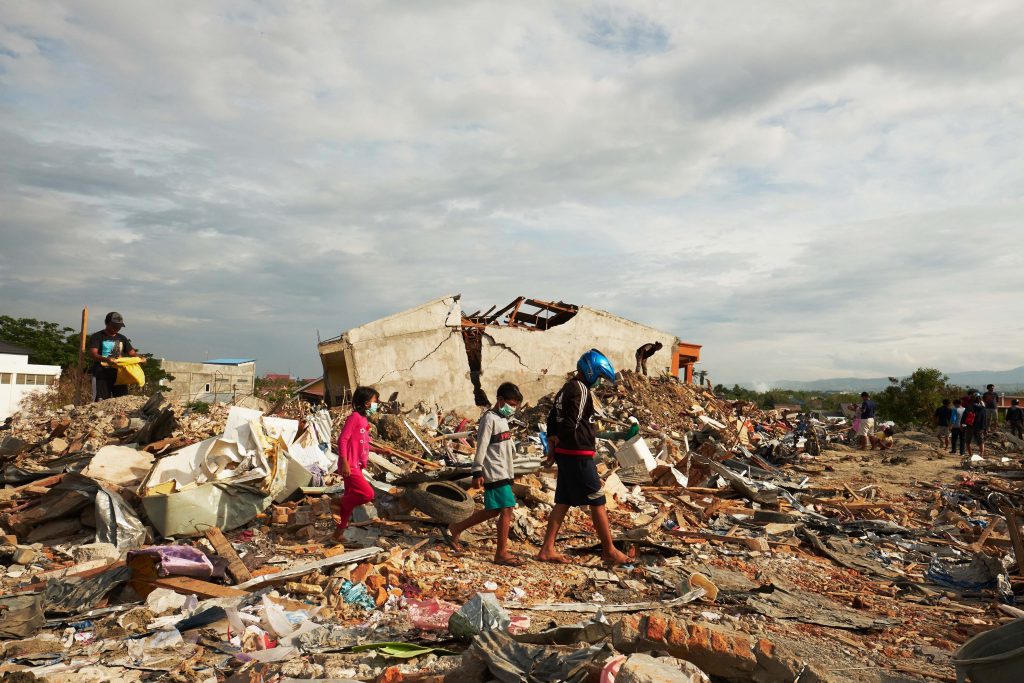
For the first weeks of my stay, electricity and supplies were limited. I had a stash of energy bars and a “lifesaver” water bottle, head torches, power banks to make sure I was able to work, and a first aid kit. There were frequent aftershocks — some so bad that I had to evacuate my hotel room in the middle of the night.
My commission with the Disasters Emergency Committee (DEC) and Arete started on 5 October 2018, shortly after I had arrived in the disaster zone.
Gathering stories
In some of the places we visited, I could smell the dead bodies left under the mud and debris. I also saw the shoes of babies, and all sorts of personal items. This is where photography ethics become even more important — I was careful not to disturb people’s possessions and memories.
We spent time with Viola, who was aged only 10, at a child-friendly space in Jono Oge village. During her interview, she told us about the moment that the earthquake hit. Despite her young age, and the difficult experiences she had faced, she was very articulate.
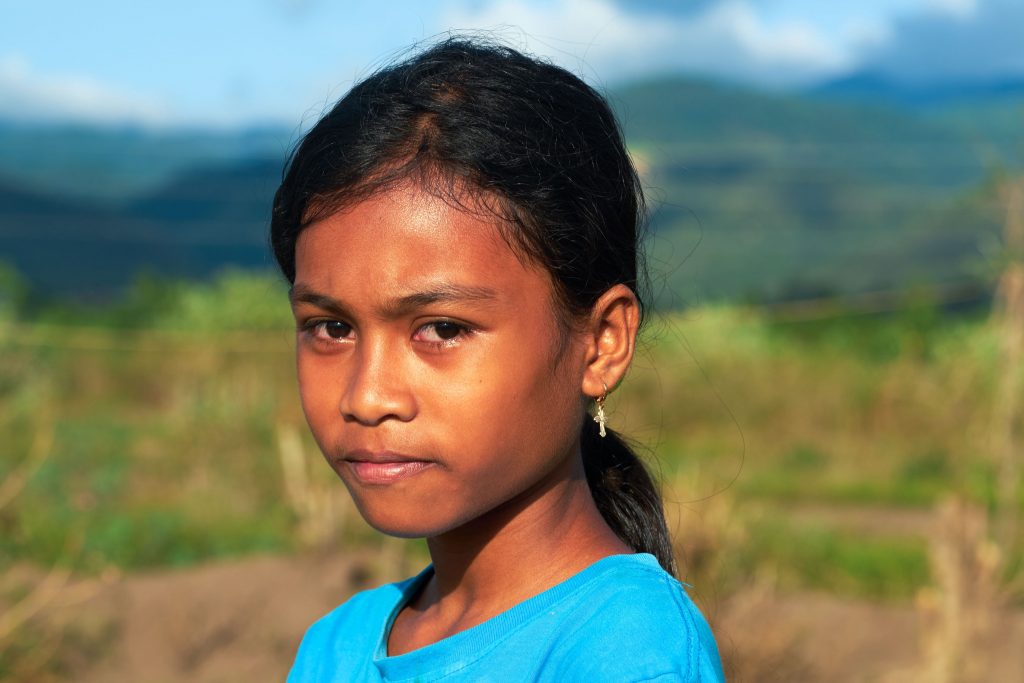
“When the earthquake hit I was at home and playing on the road,” she remembers. “I ran to my house, crying all the time. We didn’t know where to run to and we couldn’t run anyway because the land kept shaking. We all just sat there afraid.”
“I have been living in this temporary shelter for more than seven days now. I feel sad. It is uncomfortable in the shelter because it is hot and there is no water. I can’t go to school — it’s broken and collapsed. Now my friends are just scattered.”
We watched one Internally Displaced Person (IDP) cooking dinner for the family in her temporary home. Even in the difficult circumstances that she faced, she was still kind and generous, offering us food and water.
Generally, the survivors were friendly and were happy to let us to enter their new spaces. But some were too traumatised. One mother and daughter had suffered terrible trauma and were unable to talk to people about what had happened to them.
The aid workers of Indonesia
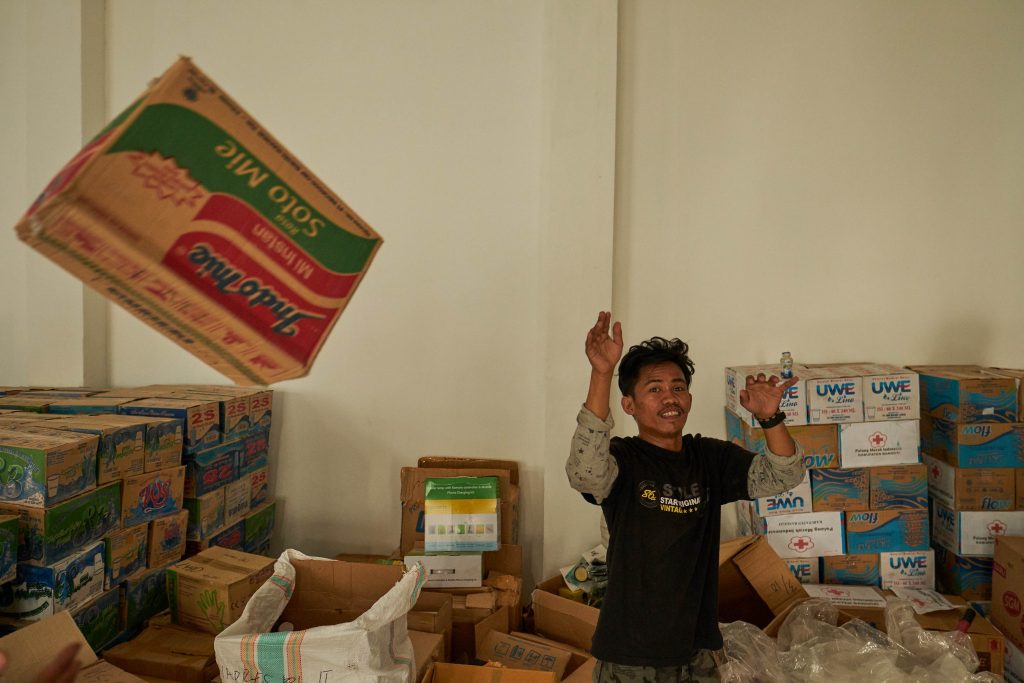
We came across a local volunteer helping to load aid into a distribution truck. He was happy in his work helping others and happy to be photographed. Thanks to the efforts of those like him, aid was getting through to serve the initial needs of the people, like food, water, tarpaulins and medical assistance.
It was great to work alongside the local staff. Everyone was professional and had a good understanding of the suffering the victims were going through and their personal needs. In turn, working with them helped to give me a better understanding of the situation.
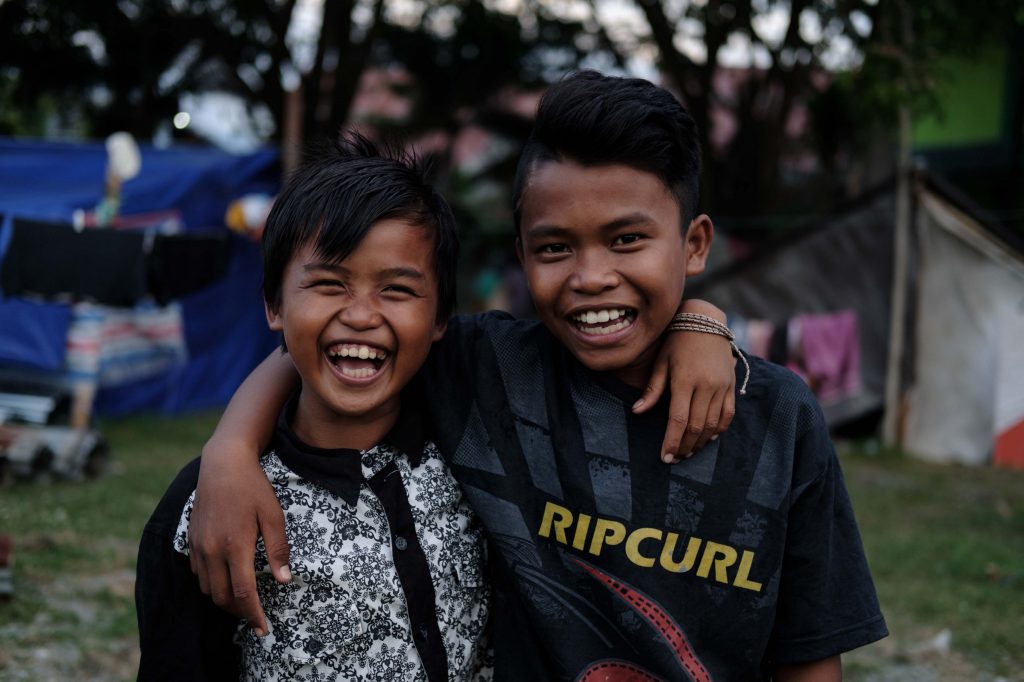
After three weeks, my visit was coming to an end. It was good to see businesses re-opening, and a sense of normalcy returning. I was amazed at the strength of the people there and thankful to them for sharing their stories with me.

Lewis Inman is an award-winning documentary photographer and filmmaker born in London and now based in the Philippines, covering social issues and commercial commissions worldwide. Lewis received a 1st class honours in Photojournalism & Documentary Photography from University of the Arts London (LCC). Lewis has won many awards including first place prize of the Symons-Hatton Award, recognising his “commitment and dedication to Lens Based Media”.
Arete / DEC


